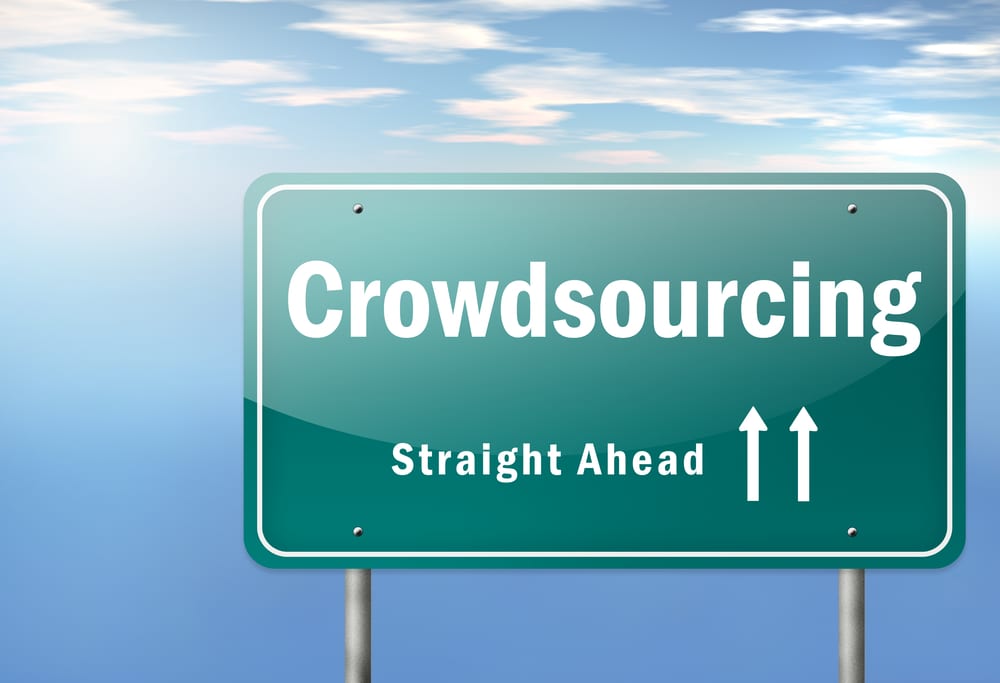Do you ever have trouble keeping up with the latest trends?
As a business owner, keeping ahead of your competition can feel impossible now – but it doesn’t have to be.
Amid all the chatter about AI and blockchain, there is one trend that’s been consistently empowering companies over the past few years: crowdsourcing.
With a growing library of best practices and reliable outsourcing options on offer, there’s never been a better time for savvy entrepreneurs to explore this approach.
In this article we’ll show you why crowd souring could be the perfect solution for many businesses with our ultimate guide.
What is Crowdsourcing?
Crowdsourcing is obtaining services, ideas, or content from a large group of people over the internet using an open-call format.
Companies outsource projects to a ‘crowd’ of workers willing to offer their skills in exchange for a reward.
This method has grown hugely popular, allowing businesses to access services and skills quickly, cost-effectively, and efficiently.
Plus, it provides individuals with an opportunity to use their own unique talents to earn money from the comfort of their own homes.
From design projects and marketing tasks to software development and creative content creation, crowdsourcing can be a powerful asset for businesses of all sizes.

Different Types of Crowdsourcing
Crowdsourcing projects come in all shapes and sizes. Here are some of the most popular types:
• Crowd Funding: This is when a business or entrepreneur raises money from large numbers of people, usually via an online platform, to fund new projects or products.
• Open Innovation: This involves companies using ideas from outside their organization to develop new products or services.
• Micro Tasking: This is when individual tasks are broken down into smaller pieces that can be completed quickly and easily by many people.
• Idea Generation & Crowd Voting: Companies using this type of crowdsourcing typically post an idea or concept online, then ask the public to provide feedback and vote on their favorites.
• Market Research: Companies use this type of crowdsourcing to collect data from a large number of people, which they then analyze and interpret to gain insights into customer behavior.
Crowdsourcing Vs. Crowdfunding
It’s easy to confuse crowdsourcing and crowdfunding, but they are quite different.
Crowdfunding is a form of raising money from the public to finance projects or ideas.
Crowdsourcing, on the other hand, is the practice of obtaining services, ideas or content from a large group of people over the internet using an open-call format.
Crowdsourcing Best Practices
If you’re considering taking on a crowdsourcing project, there are a few best practices that can help ensure success. By following these steps, you can make outsourcing more efficient and ensure that the final product meets your expectations.
• Define Your Goals: Before you even begin the process, you must clearly understand what you want to achieve and how you plan to measure success.
• Identify Your Audience: Once your goals are outlined, consider who will be most qualified for the project. First step in marketing research process is to outline your goals. Then consider who will be most qualified for the project.Knowing who is impacted by or interested in the project’s outcome will help you create targeted posts and narrow down the field of potential workers.
• Set Clear Expectations: Make sure to set clear expectations before beginning a project. This includes deadlines, the scope of work, compensation, payment terms, and deliverables.
• Provide Guidance & Feedback: As the project progresses, provide clear guidance and feedback to ensure the work remains on track. This will also help build trust with your remote workers.
• Utilise Automation: To save time and reduce potential errors, use automation tools such as online forms or payment systems to streamline communication and data-collecting processes.
Crowdsourcing Examples:
1. Waze
One of the most successful crowd-powered start-ups is Waze. It’s an app that allows users to report traffic jams and automatically gives directions for the best route.
Waze crowdsources information by measuring drivers’ speed to determine traffic jams and by asking users to report road closures.
It’s a great app that proves a dedicated crowd is sometimes all a company needs. It also attracted some big-name investors and suitors.
2. McDonald’s Burger Builder
In 2014, Mcdonald’s decided to give their customers free reign and submit ideas for the types of burgers they’d like to see in store.
They could create their perfect burgers online, and the rest of the country could vote for the best ones. In Germany, creators were also encouraged to develop their own campaigns, which included viral videos and other valuable content marketing, which of course, cost Mcdonald’s nothing.
Once the winners were crowned, Mcdonald’s released the burgers weekly, along with the picture and short bio of the creator.
3. My Starbucks idea
Starbucks has a strong presence on multiple social networks and regularly encourages consumers to submit, view and discuss submitted ideas with employees from various Starbucks departments.
They even have a website dedicated to this purpose, including a leader board to track which customers are most active.
Experimentation and social media, together with customer engagement and market research, results in a cocktail that has made the brand excel.
4. Lego
The toy company Lego is responsible for probably one of the best examples of Crowdsourcing we’ve seen.
The company allows users to design new products and, at the same time, test the demand. Any user can submit a design that other users can vote for.
The idea with the most votes gets moved to production, and the creator receives a 1% royalty on the net revenue.
Lego has successfully increased the number of product ideas and improved customer engagement. And this kind of engagement generates a buzz that’s difficult to recreate by any other method.
Just like Mcdonald’s, creators take it upon themselves to promote their idea and in doing so promote Lego as a company, too.
5. Samsung
Even the big guys such as Samsung realize the value of Crowdsourcing. Samsung has the largest Crowdsourcing facility in Palo Alto.
What they seek from others is innovative solutions for existing electronic products and technologies. They also seek collaboration with other firms and interested individuals.
In 2013, Samsung partnered with a product development platform, Marbler to Crowd Source ideas on utilizing newly discovered patents from NASA.
They offered users the chance to help create the company’s next product and earn a share of revenue along the way.
6. Lays
The chip manufacturer reaped the rewards of their ten-month long ‘Do Us A Flavour’ Crowdsourcing campaign. It encouraged consumers to create their very own flavor of chip and just like the others, people voted for their favorite.
The winner, ‘Cheesy Garlic bread’ contributed to an 8% sales increase in the 3 months following its release.
7. Pebble
Pebble only exists because of Crowdfunding, it used Kickstarter to raise funds for the development of Pebble technology that soon became the Pebble Smartwatch and then Pebble Time Steel.
The company grew from a simple idea on the popular fundraising website Kickstarter, to a brand that has crowd produced a product that rivals the likes of Apple and Samsung.
The Pebble Smartwatch is Kickstarter’s biggest crowdfunding success to date, but not only did Pebble crowd fund this project, they also crowdsourced it by encouraging people to get onboard and share their knowledge and talents.
Of course, ‘backers’, that’s funders to you and me, receive rewards once the product is produced. They either get it at a discounted price, or they get it before anyone else.
8. Greenpeace
One of the more accessible and most popular ways of Crowdsourcing is to crowdsource for ads. Greenpeace turned heads in 2012, when they crowdsourced environmental activist quotes for their Shell Oil “Let’s Go” advertisements.
They ran a contest to get controversial, sarcastic, and satirical quotes from their followers and then used them on advertisements targeting the oil company Shell. An example for you is, “The ice caps won’t melt themselves, people. Let’s Go.”
9. Airbnb
You could say that Airbnb’s whole business model is based on Crowdsourcing – it’s essentially a travel website that allows individuals to let out their homes all over the world. If it wasn’t for them, there’d be no site.
More recently, however, they teamed up with eYeka and worked on a Crowdsourcing project that asked filmmakers worldwide to create fresh, authentic video content about the places they call home. The videos had to be 60 seconds long, and the winners win a share of 20,000 euros.
But this isn’t the first time they’ve crowdsourced content. In 2013 they asked users to submit scripted shots from all over the world in the form of Vines, via Twitter. They then put the clips together, named it Hollywood & Vines, and used it as a TV ad.
From these campaigns, not only have Airbnb acquired millions of unique content that adds quality and authentic value to the Airbnb brand, they’ve also saved themselves a substantial amount of money.
10. Innocent Drinks
Innocent is a British fruit smoothie company started by three friends in 1998. The company has since become one of the most popular smoothie brands in Europe and the UK, and it all started with a little bit of Crowdsourcing.
The original three friends behind the brand put up a poster in a supermarket asking customers to put down their names if they wanted the product to stay on shelves. The response was overwhelming, and the Innocent Drinks brand grew from there, with 1 million supporters signing up for the cause.
Since then, Innocent has kept up its tradition of Crowdsourcing – most recently by recruiting a crowd of ‘Innocent Explorers’ who were tasked with creating content for the brand. They also regularly crowdsource new product ideas, encouraging customers to share their ideas and help shape future products.
Conclusion
There are even more great examples of Crowdsourcing if you look into it, and many ways you can incorporate it into your business model.
Whether you’re a new company just starting, a fairly established company looking for extra marketing, or a company looking to engage more with your customers, you can go as little or as large as you like with Crowdsourcing, and it will almost always benefit you in some way.
What’s your experience with Crowdsourcing? Is it something you’d consider?
Frequently Asked Questions on Crowdsourcing
The four main types of Crowdsourcing are: Creative (or Design) Crowdsourcing, Innovation Crowdsourcing, Content Crowdsourcing and Business Process Outsourcing. Each type has its own set of advantages and disadvantages, so it’s important to research each one thoroughly before deciding which one is best for your business.
Crowdsourcing is the practice of obtaining services, ideas, or content by soliciting contributions from a large group of people, typically over the internet. It can be used to help businesses access talent and resources in an efficient way. Companies often use crowdsourcing for marketing purposes such as gathering feedback, creating content, and generating ideas. It is also sometimes used to help businesses outsource business processes and tasks.
One example of crowdsourcing in marketing is when companies solicit the public for their opinions or feedback. Companies can use this to gather useful input from customers on certain products or services, which can help them make informed decisions about future marketing campaigns and product releases.
Crowdsourcing can be done in a variety of ways. Companies often use social media platforms, websites, or mobile apps to solicit contributions and feedback from the public. By setting up an online platform, companies are able to reach out to a large group of people with relative ease and efficiency. Companies should also ensure that the process is secure and that people are held to certain standards of quality and professionalism. Additionally, it can be helpful to solicit feedback through short surveys or questionnaires in order to get the most useful information from the public.


